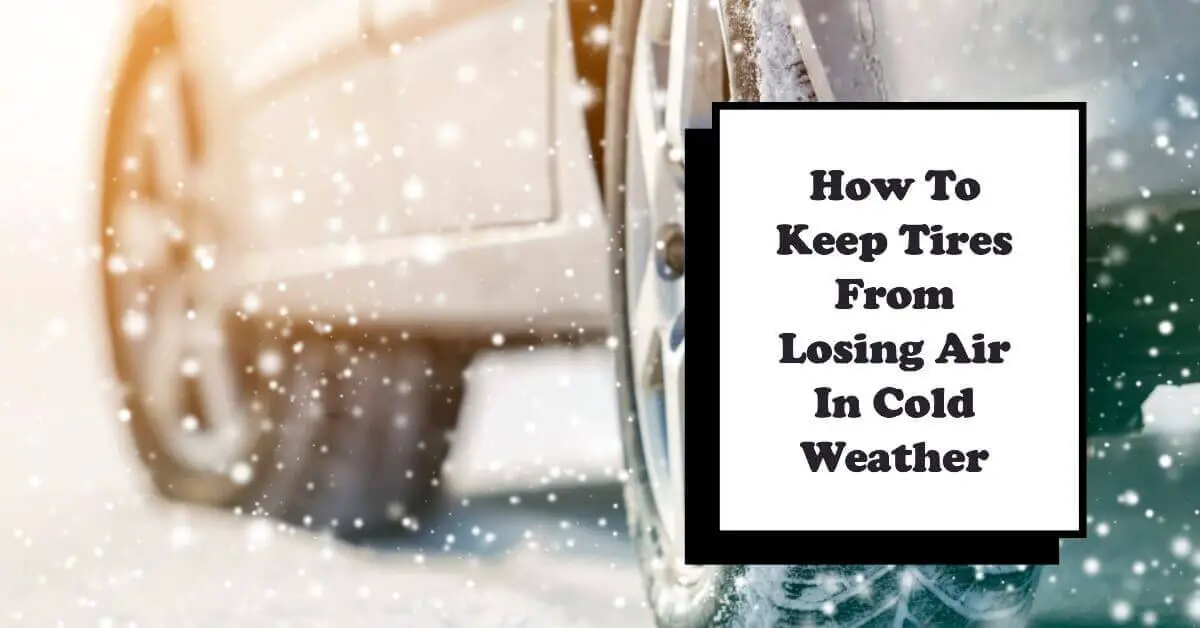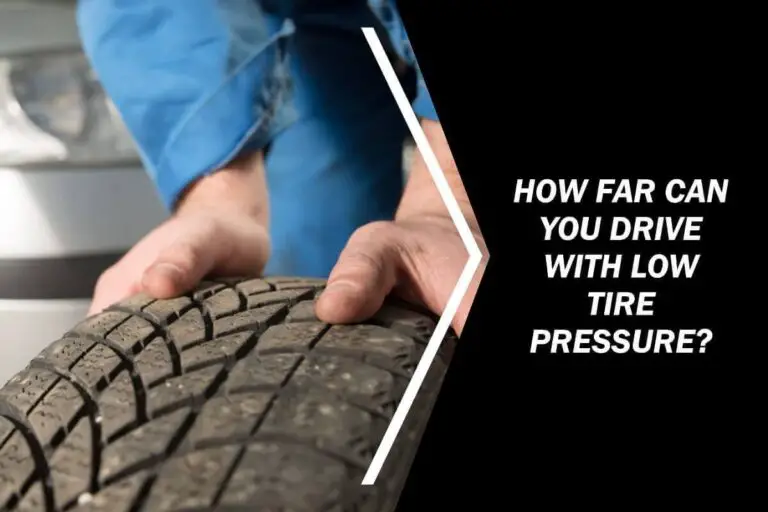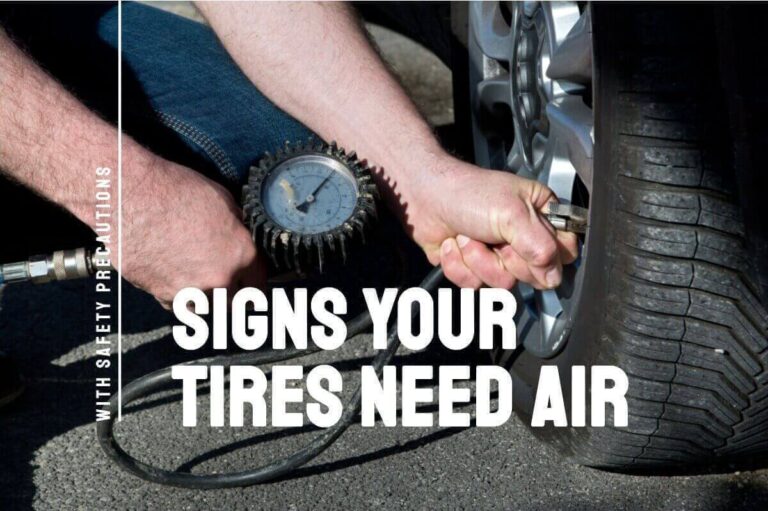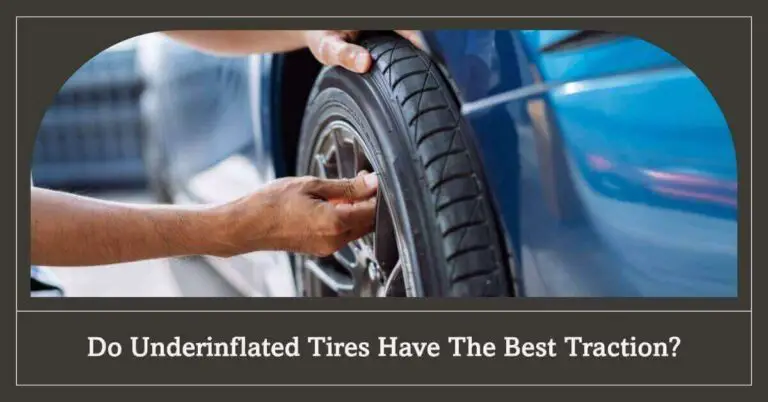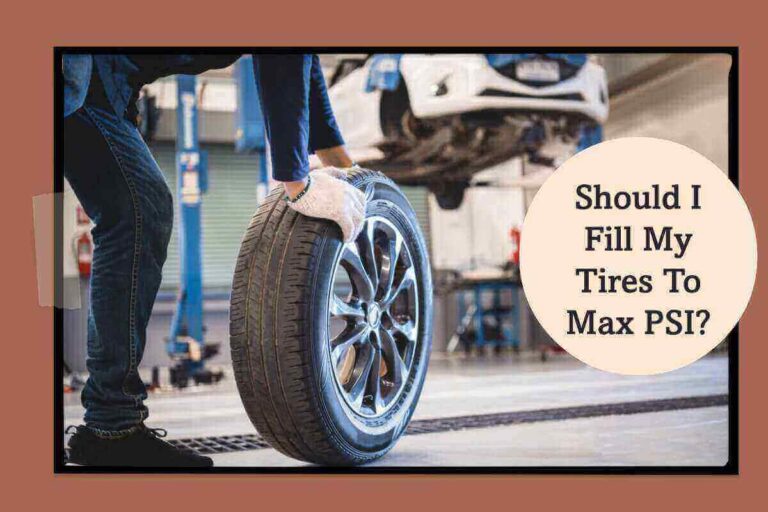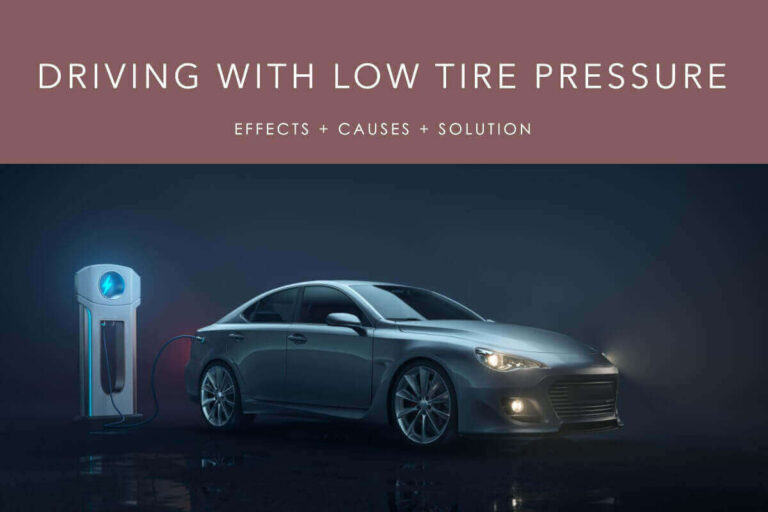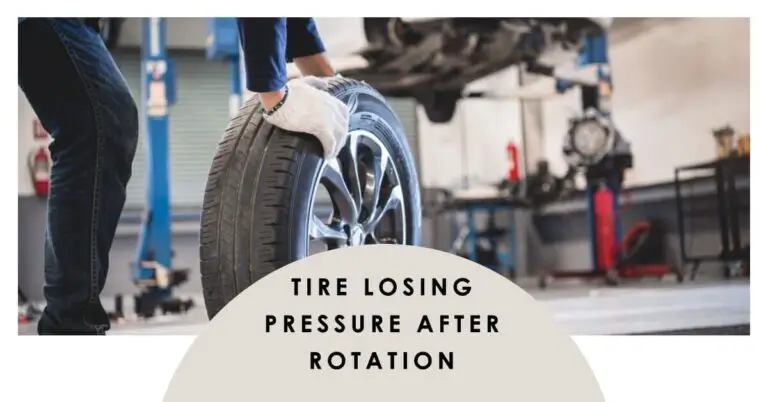When winter rolls around, one of the most common issues car owners faces is tires losing air in cold weather. If you’re not properly prepared and don’t take the necessary precautions, your tires could end up flat and leave you stranded in sub-freezing temperatures.
We’ll explain in detail how to keep tires from losing air in cold weather so you can stay safe during winter.
The Science of Tire Pressure in Cold Weather
Tire pressure can be affected by changes in temperature, with a decrease in temperature causing a decrease in tire pressure. It is because as the temperature drops, the air inside the tire contracts, causing the pressure to decrease.
In cold weather, tires can lose up to 1 psi (pound per square inch) for every 10-degree Fahrenheit drop in temperature. For example, suppose the tire pressure is at the recommended level of 30 psi when the temperature is 70 degrees Fahrenheit. In that case, the pressure could drop to around 27 psi when the temperature drops to 20 degrees Fahrenheit.
It’s important to check your tire pressure in cold weather, as under-inflated tires can lead to poor handling and increased fuel consumption and can cause uneven wear on the tires, reducing the life of your tires and increasing the risk of a blowout.
To ensure that your tires are properly inflated during cold weather, it’s recommended to check the tire pressure when the tires are “cold,” meaning that the vehicle has not been driven for at least 3 hours. It will give you an accurate reading of the tire pressure, and you can then adjust the pressure as needed to bring it back to the recommended level.
How To Keep Tires From Losing Air In Cold Weather
Cold weather can take its toll on your vehicle’s tires, leading to air loss and poor performance. Knowing how to keep tires from losing air in cold weather is an important part of proper car maintenance. From checking your tire pressure regularly to using the right kind of valve stem caps, there are many steps you can take to ensure your tires remain properly inflated.
Step 1: Inflate Tires Correctly
Inflate Tires Correctly is the first step to keeping your tires from losing air in cold weather. Properly inflated tires can make a huge difference to how your car handles and performs on the road and help you save money on fuel costs due to reduced rolling resistance. To ensure that your tires are correctly inflated, it’s important to refer to the manufacturer’s recommendations for each tire size and pressure rating.
Check your tire pressure once a month (or before long trips) when temperatures are cooler and even more so in winter. When inflating your tires, use an accurate tire pressure gauge as well as an air compressor or hand-held pump with a reliable reading.
Be sure to fill all four of your vehicle’s tires evenly until they reach their optimal pressure levels – too much air can cause damage just like too little.
Step 2: Monitor Tire Pressure
As temperatures drop, tire pressure can become an issue for drivers. Cold weather can lead to a loss in air pressure, resulting in poorly inflated tires and potentially unsafe driving conditions. It is important to be aware of the current state of your vehicle’s tires during cold weather, and this begins with proper monitoring.
The best way to monitor tire pressure is by using a tire pressure gauge. This device uses a metal stem that attaches to the valve stem on each tire and then displays the accurate reading of the PSI (pounds per square inch).
Checking your tires regularly with a tire pressure gauge will ensure you know how much air is left inside of them so that you can take any necessary steps for maintenance or replenishment.
Step 3: Check for leaks
Step 3 on how to keep tires from losing air in cold weather can wreak havoc on tires, causing them to lose air quickly. To keep your tires from losing air in winter, there are several steps you should take. Step 3 is to check for any leaks that may be present in the tire.
Before looking for potential leaks, it’s important to ensure your tires are inflated properly according to the manufacturer’s recommendations. Once your tires have been filled properly, check around the rim and valve stem of each tire for any signs of a leak.
If the tire shows signs of bubbles or foam appearing near these areas, it could indicate that a leak is present and needs to be fixed promptly by an experienced mechanic. You should also inspect each tire’s sidewall and tread pattern for cracks or bulges, which could indicate a small leak.
Step 4: Drive Wisely
As the winter months approach, it is important to take preventive measures to ensure that your car tires remain well-inflated. Step 4 of this process includes driving wisely in order to keep tires from losing air in cold weather.
It is important to drive at a steady speed and avoid excessive accelerations or decelerations. It reduces wear on the tire and decreases the pressure changes inside each tire, keeping them inflated for longer.
Additionally, it is essential to be mindful of terrain when driving; going over bumps or potholes can cause air loss and reduce the strength of a tire’s sealant. Change your route so that you can travel on smoother roads with fewer bumps or potholes.
Ensure never to overload your vehicle, as you can exceed its carrying capacity and wear down your tires faster than usual.
Step 5: Use Tire Sealant
One easy way to prevent air loss from cold weather is by using tire sealant. Tire sealants are a quick and affordable solution for preventing air loss, as they can be added directly into the tire without needing any mechanical repair or additional tools.
When using tire sealant, you should always follow the bottle instructions or packaging instructions carefully. Make sure to fill each tire with the right amount of product and allow enough time to set up and work effectively.
You should also check your tires regularly following the application of tire sealant to monitor their inflation level and ensure that they remain safe for driving in cold weather conditions.
Tips for Safe Driving in Cold Weather
Driving in cold weather can be a scary prospect for many people. Taking extra safety precautions when driving in cold temperatures and icy roads is important.
Here are some tips for safe driving in winter weather so you can stay safe on the road.
- Slow down and increase the following distance as roads may be slick or icy.
- Use headlights and windshield wipers as necessary.
- Keep an emergency kit in your vehicle, including blankets, warm clothing, and a bag of sand or salt to help traction if your vehicle becomes stuck.
- Ensure your tires are properly inflated and have adequate tread.
- Keep your gas tank half full to prevent the fuel line from freezing.
- Keep an eye on the weather forecast and avoid driving if conditions are severe.
- Keep your vehicle well-maintained, including regular check-ups on the battery, brakes, and windshield wipers.
- Always wear your seatbelt and be aware of the possibility of black ice, which can form on roads that appear to be clear.
Advantages of Driving in Cold Weather
Driving during cold weather can be an intimidating experience for many, but a few advantages make it worth taking the risk.
- Cold weather may discourage some people from driving, which can result in less traffic and a smoother driving experience.
- Clear, cold days often have less air pollution, resulting in better visibility for drivers.
- Cold weather can improve road conditions by freezing over potholes and other imperfections, making the surface smoother and more stable.
- It reduces the risk of engine overheating, which can be a concern during the hot summer.
- It can increase tire traction on the road, making it easier to maintain control of your vehicle.
It’s important to note that these advantages are only valid if the weather is not severe and if you follow the safety tips mentioned in my previous answer. Also, these advantages may vary depending on the location and road conditions.
Disadvantages of Driving in Cold Weather
There are several disadvantages of driving in cold weather, including:
- Cold weather can lead to foggy and misty conditions, making it difficult to see the road ahead.
- It can cause roads to become icy and slippery, increasing the risk of skidding and losing vehicle control.
- Cold temperatures can make it harder for your car to start and for your brakes to respond quickly.
- It can cause the air in your tires to contract, leading to lower tire pressure and decreased traction.
- It makes it difficult to clean your car, as the water and dirt on the car body might freeze, making it difficult to remove.
It is important to be prepared for cold weather driving by checking your vehicle before you hit the road, making sure your headlights, brakes, and windshield wipers are in good working order and keeping a winter emergency kit in your car.
Conclusion
For drivers in cold climates, keeping tires properly inflated and properly maintained is key to staying safe on the roads. A deflated tire can cause a driver to lose control of their vehicle and potentially lead to a dangerous accident.
By following simple steps such as checking tire pressure regularly, refilling low tires with the appropriate amount of air, and using winter-grade tire sealant or an inner liner system, drivers can ensure that their vehicle has sufficient traction in icy or snow-covered road conditions.
It is important for drivers to keep their vehicles serviced according to manufacturer specifications and inspect tread wear every few months. Taking these precautions will help protect both the driver’s safety and the tires’ longevity.
FAQs
Is it normal to lose air in your tires when it’s hot?
Yes, it is normal to lose air in your tires when it’s hot. This phenomenon is known as ‘heat cycling.’ As the temperature rises, the air inside your tires expands and causes the tire pressure to increase. When the temperature cools down again, the air contracts and causes the tire pressure to decrease. It happens naturally and is a normal part of owning a car.
How do I stop my tires from losing air?
The best way to stop your tires from losing air is to ensure they’re properly inflated. You can do this by checking the pressure with a tire gauge and adding air if necessary. It’s also important to check the valves for any cracks or leaks. If you find any, replace the valve stem as soon as possible.
How do you protect your tires from heat?
One of the best ways to protect your tires from heat is to make sure they are properly inflated. Tires that are over or underinflated can cause the rubber to wear down faster and make them more vulnerable to damage from heat. It’s important to check your tire pressure regularly and adjust as needed.
Why is my tire losing air but no hole?
It’s possible that your tire is losing air, but there isn’t an obvious hole or puncture. In this case, it could be a slow leak caused by a crack in the rubber. It can happen when the tire has been exposed to extreme temperatures or road hazards like potholes and curbs.
How much air do tires lose per month?
Tires naturally lose a small amount of air pressure each month. The exact amount depends on a few factors, such as the type of tire, the temperature outside, and how often you drive your vehicle. Generally speaking, you should check your tires every month to make sure they are inflated to the proper level.

